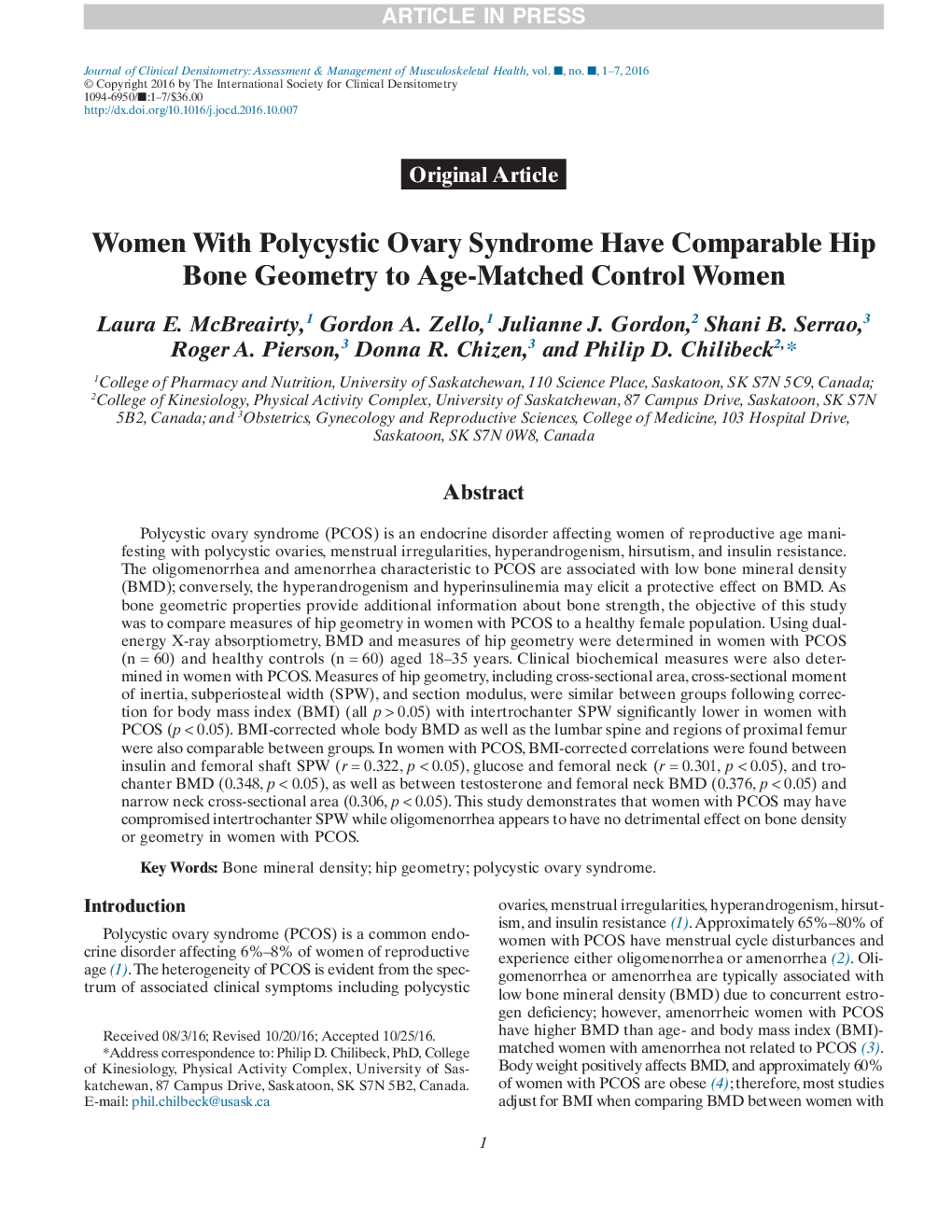| Article ID | Journal | Published Year | Pages | File Type |
|---|---|---|---|---|
| 8723006 | Journal of Clinical Densitometry | 2018 | 7 Pages |
Abstract
Polycystic ovary syndrome (PCOS) is an endocrine disorder affecting women of reproductive age manifesting with polycystic ovaries, menstrual irregularities, hyperandrogenism, hirsutism, and insulin resistance. The oligomenorrhea and amenorrhea characteristic to PCOS are associated with low bone mineral density (BMD); conversely, the hyperandrogenism and hyperinsulinemia may elicit a protective effect on BMD. As bone geometric properties provide additional information about bone strength, the objective of this study was to compare measures of hip geometry in women with PCOS to a healthy female population. Using dual-energy X-ray absorptiometry, BMD and measures of hip geometry were determined in women with PCOS (nâ=â60) and healthy controls (nâ=â60) aged 18-35 years. Clinical biochemical measures were also determined in women with PCOS. Measures of hip geometry, including cross-sectional area, cross-sectional moment of inertia, subperiosteal width (SPW), and section modulus, were similar between groups following correction for body mass index (BMI) (all pâ>â0.05) with intertrochanter SPW significantly lower in women with PCOS (pâ<â0.05). BMI-corrected whole body BMD as well as the lumbar spine and regions of proximal femur were also comparable between groups. In women with PCOS, BMI-corrected correlations were found between insulin and femoral shaft SPW (râ=â0.322, pâ<â0.05), glucose and femoral neck (râ=â0.301, pâ<â0.05), and trochanter BMD (0.348, pâ<â0.05), as well as between testosterone and femoral neck BMD (0.376, pâ<â0.05) and narrow neck cross-sectional area (0.306, pâ<â0.05). This study demonstrates that women with PCOS may have compromised intertrochanter SPW while oligomenorrhea appears to have no detrimental effect on bone density or geometry in women with PCOS.
Related Topics
Health Sciences
Medicine and Dentistry
Endocrinology, Diabetes and Metabolism
Authors
Laura E. McBreairty, Gordon A. Zello, Julianne J. Gordon, Shani B. Serrao, Roger A. Pierson, Donna R. Chizen, Philip D. Chilibeck,
